My time in Biscayne National Park began with some rocky travel. First I had to return from Yellowstone National Park, which was an adventure in and of itself. Brett, Koza and I dropped off Brian Skerry in Jackson Hole to catch his flight, and then we made the nine-hour drive back to Denver. By the time we stopped at the office to switch out my drysuit for my wetsuit it was already almost midnight! I got a few hours sleep back at Dave and Michelle’s, then packed up my things and went to the airport.
Two flights, a rental car mix-up and an enormously large headache later I arrived in Biscayne National Park. Being back in the South and hearing cicadas again felt like putting on a comfortable sweater- albeit a hot and humid one! I met my awesome flatmates Jeneva Plumb Wright, an intern with Cultural Resources here in the park, and JT, a fellow southerner doing a three-month maintenance stint in the park. And with that I unpacked, prepped my gear for the next morning and fell asleep.
In the morning I met up with Dave Conlin, who had flown to Biscayne a few days earlier. He was assisting a program called Youth Diving with a Purpose, or YDWP. The program is made up of a diverse group of students from different schools, states and even countries, and all of them gain exposure to underwater archeology through the program. Excited to see their work, I splashed down with Dave Conlin, David Gadsby, an archeologist with the National Park Service, and Chuck Lawson, the Cultural Resource manager at the park, and started photographing the intrepid young archaeologists.
Dave having fun with some seaweed!
The site the YDWP program was working on this year is called Captain Ed’s Wreck.The ship lies in about 20 feet of water, and is about 11 miles offshore. According to Josh Marano, a Biscayne National Park archeologist, the ship was from the mid 19th century, and was a sailing cargo vessel. The name came from a concessionaire captain, Captain Ed, who discovered the site and led snorkel trips there- he notified the Park Service of the site and the wreck still bears his name.
The water was an absolute dream to dive in, especially after diving in the 40 degree Fahrenheit water of Yellowstone Lake. Even more exciting than the lovely water temperature and excellent visibility however, was the excitement of the kids in the Youth Diving with a Purpose program. Their enthusiasm was infectious, and after each dive I was eager to get back in the water to photograph their work. It was a challenge to compose a picture with 20 young archeologists diving around the site, but after a few dives the students fell into a rhythm, and it became easier to isolate them photographically to compose a shot.
The students had a chance to show-off their newfound diving and archeological skills when Brian Carlstrom, the superintendent of the park, visited the site. Dave Conlin acted as tour guide and showed Brian where the masts of the wreck used to be, as well as other archeological points of interest. The students shared their work with the superintendent and wrapped up their last day of diving!
Superintendent Brian Carlstrom (left) gives the “ok” to a student archeologist.
Once YDWP concluded I joined the Southeast Archeological Center (SEAC) on their project documenting the Long Reef Cannon Site in the park. The SEAC team included David Morgan, the director of SEAC, Thadra Stanton, the Principal Investigator of the project, Charlie Sproul, a Museum Specialist and Meredith Hardy, an archeologist. The SEAC team was also joined by several members of the SRC, including John Bright, Jessica Keller and Susannah Pershern. Chuck Lawson, Josh Marano and Jeneva Wright of Biscayne National Park also contributed to the project, making it a collaborative effort across different groups of the National Park Service. It was great to see so many different organizations working together!
- An artifact in the Long Reef Cannon Site.
- John Bright (left) and Jessica Keller of the SRC measure the Long Reef Cannon Site.
- Josh Marano of Biscayne National Park documents the Long Reef Cannon Site.
- An artifact in the Long Reef Cannon Site.
- SEAC’s Charlie Sproul sketches an artifact.
- SEAC’s Charlie Sproul sketches an artifact.
It was also great to learn more about underwater archeology. Since my main focus is in underwater photography (pun intended) my archeological skills aren’t quite up to snuff. Joining the SEAC/SRC/Biscayne team on this project gave me an opportunity to learn more about the process of documenting an archeological site.
After spending a few days working on the Long Reef Cannon Site I transitioned to working with ongoing projects in Biscayne National Park. One project I was excited to work on was the Lionfish eradication and research project. Lionfish are an invasive species whose population has exploded in the last decade. The invasive fish are voracious eaters, and their fast rate of reproduction makes them a threat to many native reef fish. Each year the park hires interns to conduct research and help eradicate the invasive species; I worked with this year’s grad student interns: Megan Davenport, Michael Hoffman and Kristian Rogers.

My first day with the Lionfish team was a little bumpy; I made the mistake of having coffee on an empty stomach before going diving- mistake number one! The weather was a little stormy, and to top it off my regulator malfunctioned, although thankfully it happened before the dive and not underwater. Hyped up nerves, a rocking boat and intense heat resulted in my first bout of seasickness. Ugh!
The stormy weather while returning to the dock.
Thankfully we had better weather the next day, and with my newly found “sea legs” I was able to join the lion fish team both on the boat and underwater. Kristian, Mike and Megan definitely made using the speargun look easy- my two attempts went wide. I only hope that the poor fish ended up as another fish’s dinner!
Kristian spearing a large lionfish.
Jeneva and I also had the opportunity to “fillet” some lionfish for dinner. I use the word fillet generously, as it was more like a butchery. Apparently there’s only so much you can learn from a Youtube video!
Jeneva braces herself for the smell.
I also got to spend some time monitoring sea turtle nesting sites in the park. Shelby Moneysmith, the regional Dive Safety Officer and a park biologist, Katie Fisher, a biological technician, and the Fish and Wildlife interns Kelsy Armstrong and Nicole Rodi and I all piled on the boat and went to Elliot Key to look for turtle nests. Looking for turtle nests was like being a detective; we had to interpret the turtle tracks to see if and where the sea turtle laid her eggs. We had a particularly busy day for turtle activity with plenty of false tracks and possible nests.
- Nicole disembarks the boat to do sea turtle monitoring.
- Shelby, Katie and Nicole wade to shore to do sea turtle nest monitoring.
- Broken turtle eggshells are a hopeful indicator of a successful hatch; the trash in the background was buried with the turtle eggs.
- Shelby Moneysmith digs for turtle eggs on the beach.
- Trash litters the beaches of Biscayne.
- Nicole takes notes as Katie and Shelby dig for turtle eggs.
The high point of my time in Biscayne was a chance manatee encounter while doing sea turtle monitoring. All I needed was for someone to shout “Manatees!” and I was over the side of the boat with my camera. I was actually so excited that I flung my hat, sunglasses and other items all across the boat in my haste to get in the water! It was my first time seeing manatees, and snorkeling with the gentle giants was just amazing. Plus they made great models!
Later in the day we also went on two dives to do reef visual counts, or RVCs. Katie and Shelby explained to me that RVCs had been performed in the park and surrounding area for years, and have been done by different organizations at the local, state and federal level. This has yielded a huge dataset that shows biologists the “big picture” about fish populations in the area. One of the more interesting things we saw on our RVC dives was a beautiful green moray eel, who was obviously hamming it up for the camera.
Say cheese!
My last adventure in the park was to assist with Lobster Mini-Season, an annual dive derby to catch Caribbean Spiny Lobsters. This was a great opportunity to work with a different side of the park; law enforcement officers, biologists, rangers and volunteers all came together to help assess the mini-season’s impact on the lobster population in the park.
My role was to interview the captain of each boat to find out where, how and how long each boat was fishing for lobster. It was definitely a hectic experience when we had boats coming in constantly, but I really enjoyed interacting with visitors to the park.
Visiting Biscayne National Park was a rush of different people, projects and experiences. My favorite part of my experience thus far has been meeting the passionate, kind and knowledgeable people that work at each park. If the people I’ve met so far are any indication, then I’m in for a treat as I make my way across the US. Next stop: Dry Tortugas!


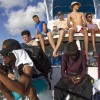
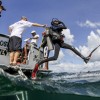
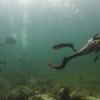
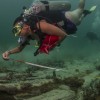
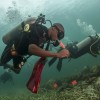
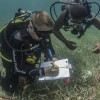
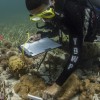
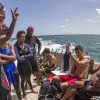

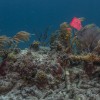
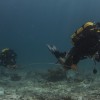
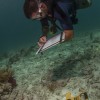
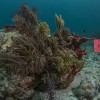
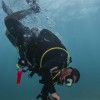
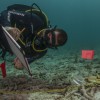


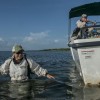
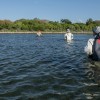
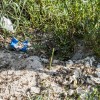
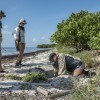
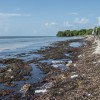
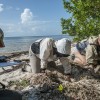
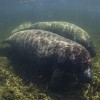
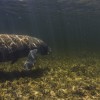
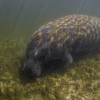
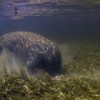
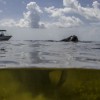



Great post and beautiful photos, Yasmeen!
It was great working with you…